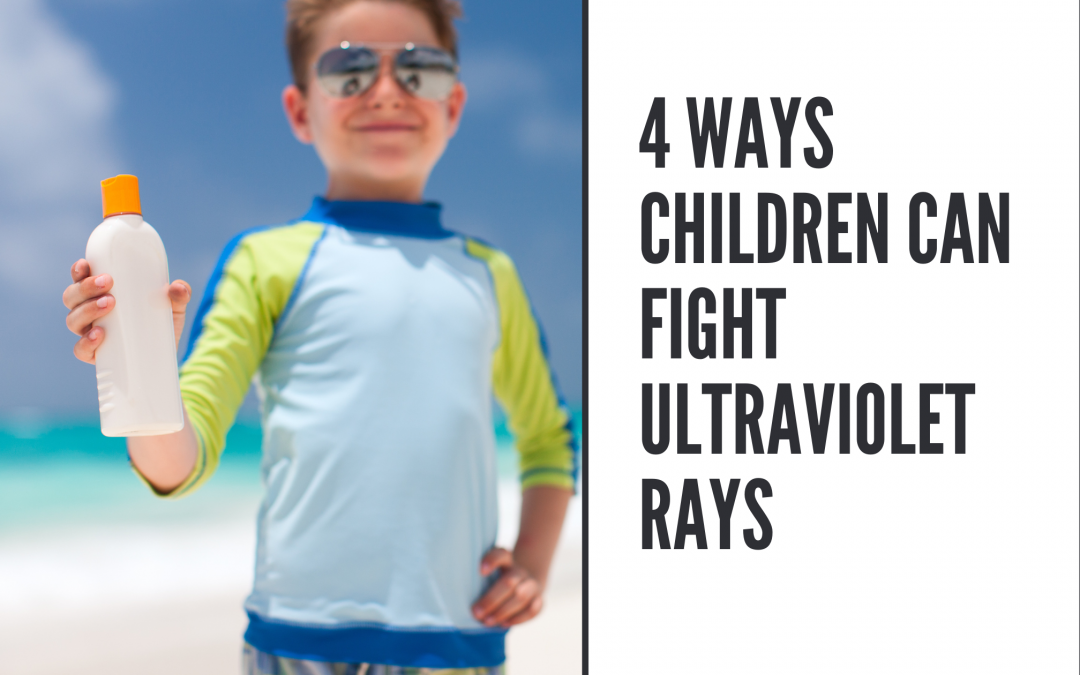Being young works against kids when it comes to the harmful effects of the sun’s ultraviolet (UV) rays. Children’s immune systems are still developing. So, they are more likely to suffer from sun-related threats. In support of July being Ultraviolet Safety Month, we have four suggestions for fighting UV rays.
UV radiation exposure can cause:
- sunburn
- darkening of the skin
- premature aging of the skin
- increase the risk of skin cancer
The CDC compiles national cancer statistics. North Carolina ranks 13th among states with the highest rate of skin cancer in the nation. We are the13th highest out of 50 states.
Avoid Ultraviolet Rays
That sounds like a no-brainer, right? Just say no to being in the sunlight. But ultraviolet rays are tricky to avoid. They find our kids in cars and school buses– or even as they are walking down the street.
One suggestion is to keep track of the time of day your kids are exposed to the sun. For example, the sun is strongest between 10 a.m. – 4 p.m. So try to schedule outdoor activities before 10 a.m. and after 4 p.m. This will be a big help in avoiding these powerful UV rays.
A second suggestion is to stay in the shade on sunny days. This is a good idea for picnics or events. That is not always possible if you move from one place to another. Also, over exposure to the sun can still damage the skin on cloudy days or in the winter. It’s a myth that cloudy weather blocks sunlight and UV rays.
If you aren’t sure how strong the sun’s rays are, the American Cancer Society suggests using the “shadow test.” Is your shadow shorter than you are? Then the sun’s rays are its strongest.
But What If You Can’t Avoid Ultraviolet Rays?
Our third suggestion is to think about a hat if your child has to be outside. A wide brimmed hat offers the best protection. You need to shield your kid’s skin in any way possible from the harmful effects of UV rays exposure. The hat you pick should have at least a 2- to 3-inch brim all around. That will protect areas often exposed to intense sun, such as the scalp, forehead, ears, nose, and eyes.
What about something like a baseball cap? Well, anything is better than nothing. But a baseball cap only protects the front and top of the head. Not so much the neck or the ears. And those are areas where skin cancers usually hit.
Try a “shade cap.” It has about seven inches of fabric hanging down the sides and back. It gives more protection to the neck. You can buy one in sporting goods and outdoor supply stores.
As for the summer-favorite straw hats, they may be airy, but they don’t protect as well as hats made of tightly woven fabric.
Our fourth suggestion is to use sunscreen. But when it comes to your children, please consult with your doctor. A child’s skin is thinner and more sensitive than an adult’s skin.
In fact, sunscreens are not recommended for infants.
The U.S. Food and Drug Administration (FDA) has regulations for sunscreen labeling. And the FDA has step-by-step advice on the application of sunscreen on children and adults.
- Apply 15 minutes before you go outside. This allows the sunscreen
(SPF 15 or higher) to have enough time to provide the maximum
benefit. - Use enough to cover the entire face and body (avoiding the eyes and
mouth). An average-sized adult or child needs at least one ounce of
sunscreen to evenly protect the body from head to toe.
There are more sunscreen details than we can go into in this blog. Please check out this FDA link. https://www.fda.gov/drugs/understanding-over-counter-medicines/sunscree
n-how-help-protect-your-skin-sun
A child gets up to 80% of his/her lifetime exposure to UV rays before age 18. During Ultraviolet Safety Month, take some time to review our four suggestions to help your children fight ultraviolet rays.
This post was written by ANTHONY M. SCIALIS. You can find him HERE.

